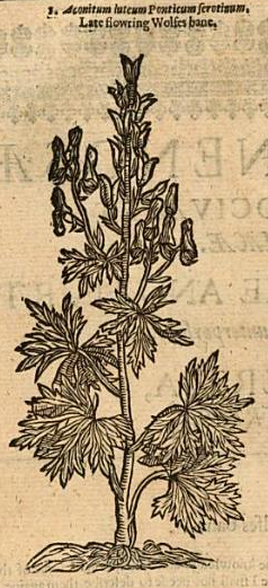

Aconite alkaloids are known to cause ventricular arrhythmia by a prolonged activation of sodium channels. She had no symptoms during observation in the hospital. She was treated with stomach lavage which removed most of the ingested plant material, and with activated charcoal. Some symptoms of ingesting Digitalis include nausea, vomiting, diarrhea, abdominal pain, wild hallucinations, delirium, and severe headache. Alarmed by the bitter taste she contacted the hospital. Foxglove or Digitalis purpurea is a very toxic plant used by folklorists and herbalists, years ago to treat congested heart failure, boils, wounds, ulcers, oedema, epilepsy and other seizure disorders as well.


The third patient was a 34-year-old woman who ate Monkshood, which she mistook for parsley. Except for some red spots around his mouth there were no other symptoms. The second patient was a 2-year-old boy who had cutaneous exposure to Aconite. Although there is no antidote for wolfsbane poisoning, a typical treatment is resuscitating the. Wolfsbane poisoning symptoms include black veins that thread through the skin, a slow heart rate, and even death. It is caused by the ingestion of wolfsbane, a poisonous plant. She was referred to the Psychiatry department. Wolfsbane poisoning can be both life-threatening and potentially fatal. After discharge she returned with identical symptoms, which were now interpreted as intentional intoxication in a suicide attempt.

She experienced severe ventricular tachyarrhythmias. The first patient, a woman aged 24, was resuscitated after accidental ingestion of plant material 'from nature'. It can only be found in the swamp with a successful DC 13 Nature check. They are easy to find, only requiring a DC 8 Nature check. 1 bottles worth of truth serum (ingested). It can also be found in some traditional Chinese medicines once processing methods have been used to eliminate the toxin.Three patients presented with an intoxication caused by Aconitum napellus, commonly known as Aconite, Monkshood or Wolfsbane. 1 bottles worth of duergar s blood, used to counteract the effects of wolfsbane poison. Where is it found?Īconite can be found across the Northern Hemisphere. Wolfsbane has traditionally been used to protect homes from werewolves and can be used to prevent shapeshifting. The major physiological antidote is atropine, which is used to treat. It is extremely toxic and should not be used for healing by the lay herbalist. Aconitum also known as aconite, monkshood, wolfs-bane, leopards bane, mousebane. It is sometimes called wolfsbane or monkshood and is found in herbs, roots or a flower. Wolfsbane has been used historically as a treatment for lycanthropy (werewolf-ism) and as an antidote to other poisons. Here are five facts about it: What is aconite?Īconite is a highly toxic alkaloid substance derived from a particular genus of plants, Aconitum. Barry Pakes, York Region’s medical officer of health, has told local media that the victims’ symptoms suggest they ingested the toxin.


 0 kommentar(er)
0 kommentar(er)
